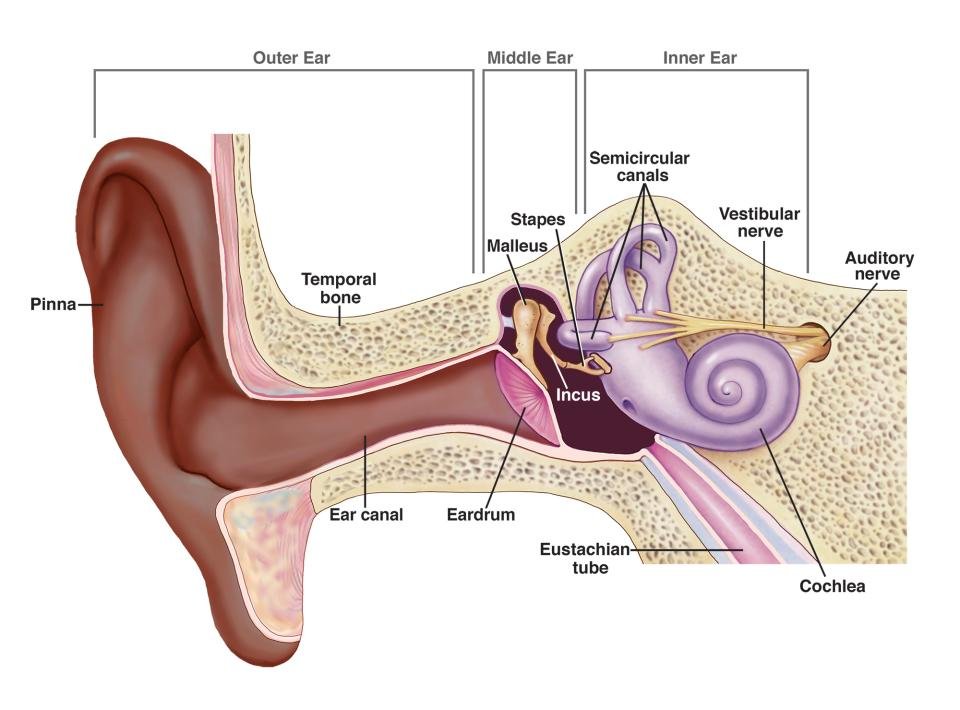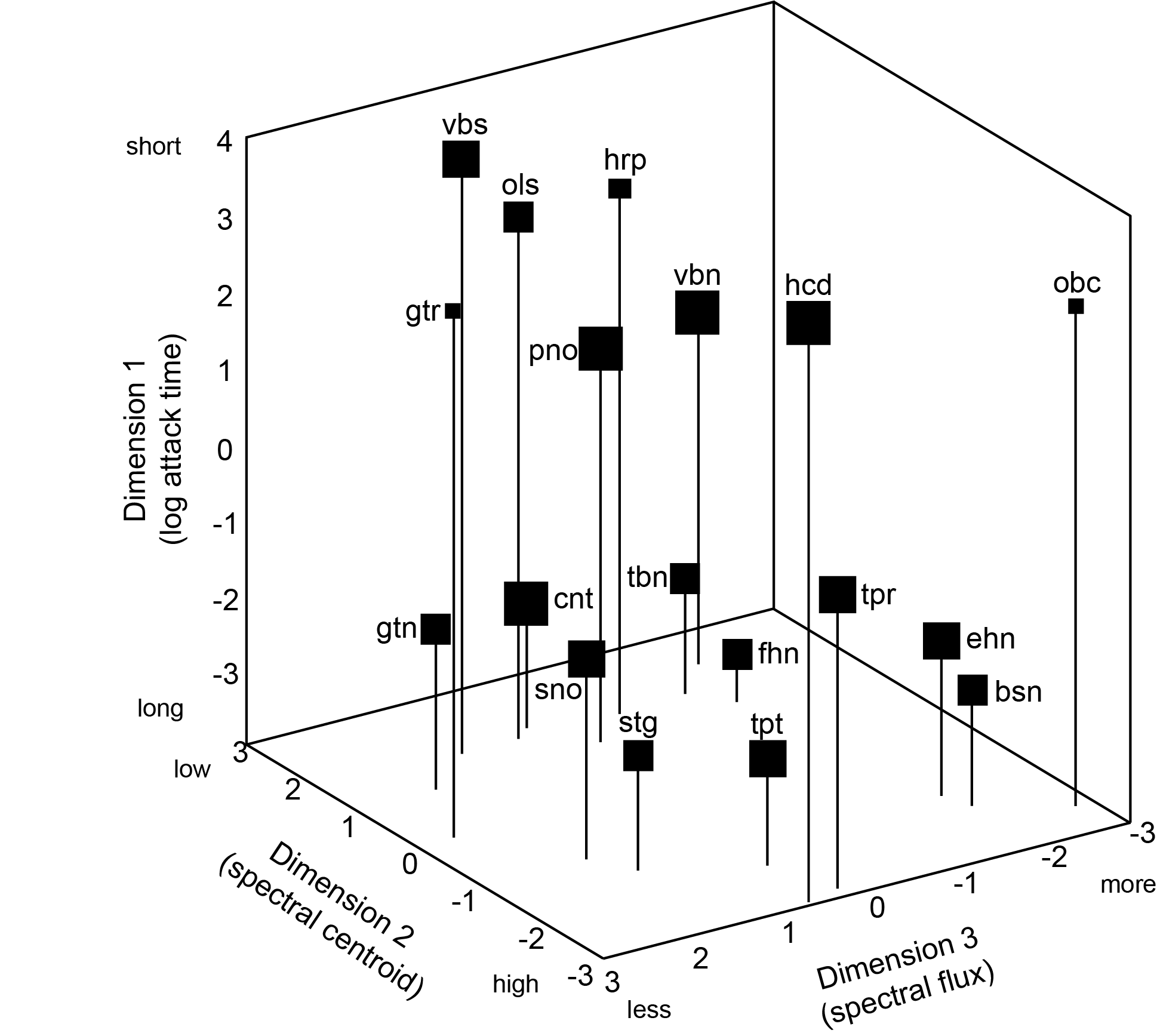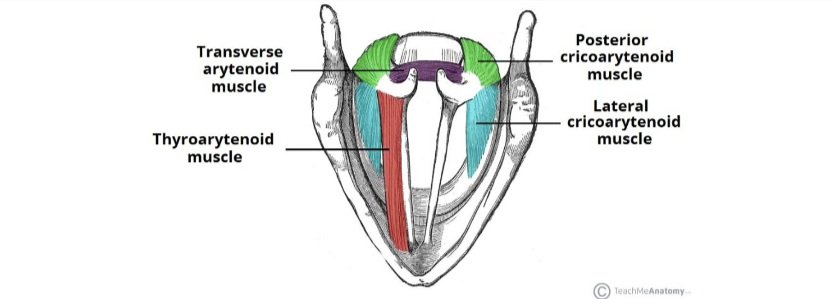Signal vs. Spectrum
EN | FR
Signal vs. Spectrum
by Julie Delisle
Timbre Lingo | Timbre and Orchestration Writings
In everyday life, sounds are captured by our auditory system and analyzed in our brains. But in order to better understand the physical phenomena that comes with sound production, we use analytical methods, both analog and computational, that are based on different representations of the sound vibration.
First, the sound wave can be represented as a signal. This means a temporal representation, where time (in seconds) is the independent variable. The dependent variable that varies in function of time is the amplitude or intensity (both measured in decibels - dB) of the sound vibration. If the sound is captured using a microphone, the signal can also be represented in form of a variation of electrical tension (in Volts - V) or power (in Watts - W), also in function of time. For instrumental sounds, the concept of envelope is based on the same type of representation.
Then, it is possible to operate a mathematical transformation on the signal in order to obtain a frequency representation of the sound vibration. This operation is called a "Fourier transform", and the resulting transformation is called spectrum (or frequency spectrum). On this frequency representation, the frequency (in Hertz - Hz) appears on the x-axis, and the amplitude (in decibels - dB) appears on the y-axis. If the spectrum is harmonic, each partial will appear at regular intervals on the graphical representation of the spectrum.
From those two principal types of representation (signal and spectrum), it is then possible to perform statistical measurements on the sound, called "acoustical descriptors".
Spectrum - Frequency representation of the same short flute tone
Signal - Temporal representation of a short flute tone
More Timbre Lingo essays
On this page:





















